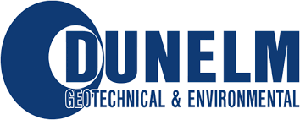Cohort 5
 Maria Box
Maria Box
- One Planet Researcher Geography and Environmental Science
- Email: maria.box@northumbria.ac.uk
- Based at: Northumbria University
Bio:
I am fascinated by extremely continental climates and the particular challenges of understanding their climate histories. I got my start as a scientist doing fieldwork for the national parks service in my home in central Australia, before completing an undergraduate degree in Earth Science at James Cook University, Cairns. For my Honours research project I used stalagmites to reconstruct environmental changes in Western Australia, which introduced me to the incredible potential of cave carbonates as archives of ancient climate change. I am now using stalagmites to investigate the climate history of another extremely continental climate: the permafrost region of northern Mongolia.
I thoroughly enjoy fieldwork and try to get outside as much as I can. I’m also passionate about scientific communication. Between degrees, I’ve worked as a field technician in the ‘sage steppe’ of the western US, an education officer for a megafauna museum in central Australia, and a geomorphologist for the Northern Territory national parks service. In my spare time I enjoy hiking, writing fiction, and hand-spinning yarn.
Research interests:
- Cave carbonates as environmental proxies
- Continental climate dynamics through history and the impacts of global warming
- Permafrost
- Intersections between climate change and human history
Education:
BSc (Honours) in Earth Science, James Cook University (Australia), 2018 – 2021
Project supervisors:
- Dr Sebastian Breitenbach – Northumbria University
- Dr Dashtseren Avirmed – Mongolian Academy of Sciences
- Dr Jack Longman – Northumbria University
- Dr Sina Longman – Teeside University
Project summary:
Mongolia’s climate is warming at a rapid rate, leading to the widespread degradation of its permafrost areas. However, paleoclimate reconstructions for previous interglacial (warm) periods in Mongolia are sparse, complicating efforts to understand the driving forces behind the accelerated rate of warming in this region. Speleothems (cave carbonates) are valuable archives of past climate change, as they preserve multiple environmental proxies and can be reliably dated using U-series dating methods. During the course of this project I will use speleothems collected from caves in northern Mongolia to reconstruct environmental changes and permafrost history over the past 500,000 years.








